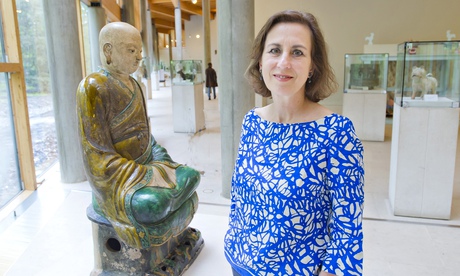
Kirsty Wark, Newsnight presenter
I prefer looking at art by myself. I’m delighted to go with other people but I’ll go round the exhibition on my own, and after we’ll regroup and discuss. When I was working on The Review Show I was very privileged and could go to galleries before and after hours. There’s nothing worse than only getting near a painting for four seconds because it’s so busy, although I love seeing a gallery used. I’d advise going first thing, as early as possible, when there will be fewest people around. There’s something very special about being alone with an artwork, in silence, feeling totally absorbed.
Ekow Eshun, arts writer
My big thing is: don’t rush. I will consciously slow down as I enter a gallery. Then, rather than rushing straight at the art, I want to read about it. Most galleries offer a guide book or an information sheet. Not that I’ll be nodding dumbly at what I read – I might completely disagree with it, but it will get me thinking. When you watch a film or see a play there is a presumption you are going to get something from the experience. In an art gallery, you have to do a lot more work. The most exciting art for me is the work that leaves me perplexed. I try to figure out why it looks odd, fascinating or seductive. It raises questions, and I try to answer them.
Jessie Burton, author of The Miniaturist
Most of the time, I connect to an art through instinct and not intellect. If I like something, I will stand there for 15 minutes or so, trying to grasp the “it”-ness to which I am attracted. But when Vermeer paints a woman’s mouth ajar, it’s like he’s inviting me to put myself into that story; he wants me to make up the distance between myself and that secret scene. Invariably, there are too many paintings, and I try not to feel guilty about the ones I walk past. With books and films, you go for what you like. We scorn people who say of art “I know what I like”, but I bet they are happier than the average, worried gallery attendee.

